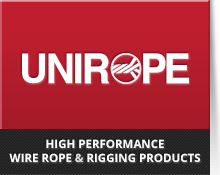Web Sling Removal Criteria
A specific procedure for the inspection of synthetic slings is your best safeguard against sling damage and abuse. We recomend that you employ a three stage level of inspection as outlined in ASME B30.9. Note that there are no Canadian Standards for slings however, some Provinces and Ministries of Labour have issued specific inspection and removal criteria depending on where the slings are used (construction or industrial use). Consult your local authorities. In Ontario consult the O.H.S.A. (as of March 2000 the ‘Ontario Health and Safety Act’ is currently under revision). Another source of information is the CSAO, Construction Safety Association of Ontario.
Initial Inspection
This inspection is done at the time the product is first received to ensure that damage has not occurred during shipment. Also verify that the goods are in compliance with the specification of the purchase order.
Frequent Inspection
This level of visual inspection should be done by the person handling the sling, or other specifically designated personnel.
Records are not required.
a) Normal service – daily when in use
b) Severe service – each use
c) Special or infrequent service – as recommended by a qualified person before and after each use.
Periodic
The periodic level of inspection is done by designated personnel at regular intervals. The interval is based upon the frequency of use, severity of service conditions, and information derived through the inspection process. Recommendations to prevent damage must be evaluated to improve the service life of the replacement slings. Written records must be kept.
|
Remove if you detect these damages |
||
 Broken or worn stitching |
 Ripps and snags |
 Crushed webbing |
 Missing tags |
 Cuts and abrasion |
 Broken and crushed |
 Weld splatter |
 Heat damage / melting |
 Localised heat / open flame damage |
 Knots |
 Chemical damage |
 Damaged eye and fitting |


